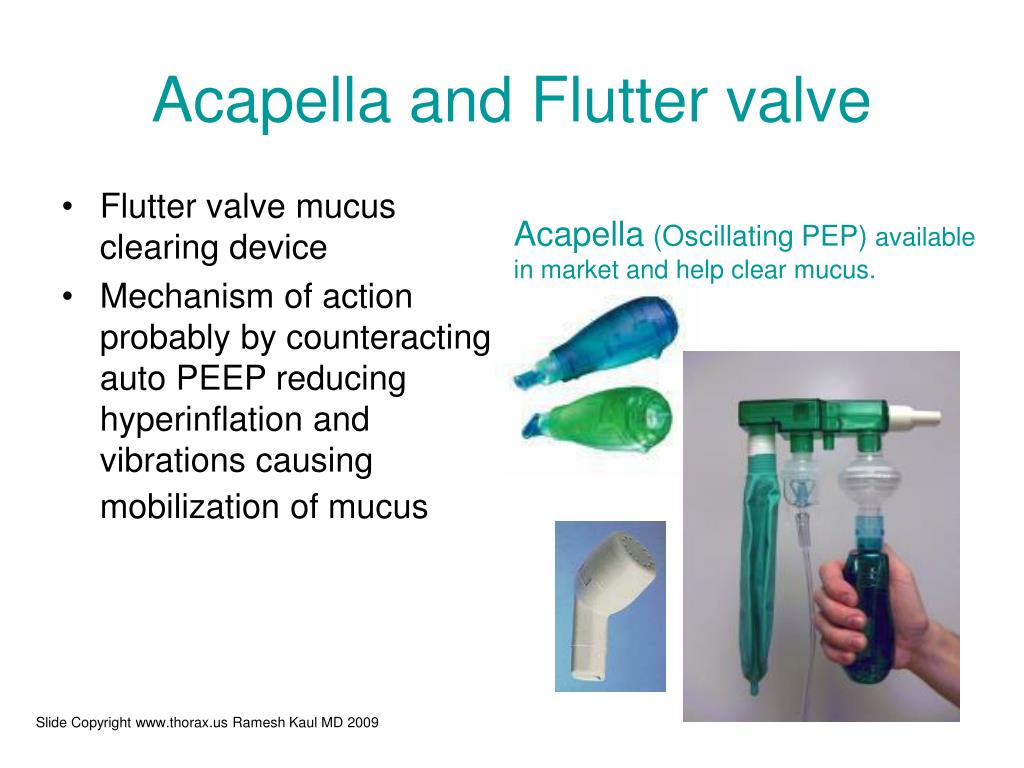
Mechanistic effects of the Acapella, Aerobika, and Shaker devices were not comparable. The percentage of tests achieving oscillation frequencies ≥ 12 Hz and PEP ≥ 10 cm H 2O was calculated for each device. Resulting waveforms were divided into 4 parts and the 2 middle parts were used to extract the following mechanical data: positive expiratory pressure (PEP), maximum expiratory pressure (P peak), oscillation frequency, and flow oscillation amplitude. Expiratory flow-volume curves were retrieved from 4 subjects with different stages of obstruction severity and were scaled according to either peak expiratory flow (4, 6, and 8 L/s) or volumes (2, 3 and 4 L), thus amounting to 24 active exhalations.
#Acapella flutter valve walgreens generator
All devices were independently connected to a pulmonary waveform generator that reproduced active exhalation flows.

The objective of this study was to assess mechanical properties in vitro and to compare the performance of 6 OPEP devices at different resistance levels under active expiratory flow patterns.Ĥ gravity-dependent OPEP devices (ie, Flutter, Gelomuc, Pari O-PEP, Shaker Medic Plus) and 2 gravity-independent OPEP devices (ie, Acapella Choice and Aerobika) were each tested at low, medium, and high resistance settings. Variations in mechanical properties between different devices may influence therapeutic efficacy. Air-flow oscillations generated by exhaling through oscillatory positive expiratory pressure (OPEP) devices favor airway clearance.


 0 kommentar(er)
0 kommentar(er)
